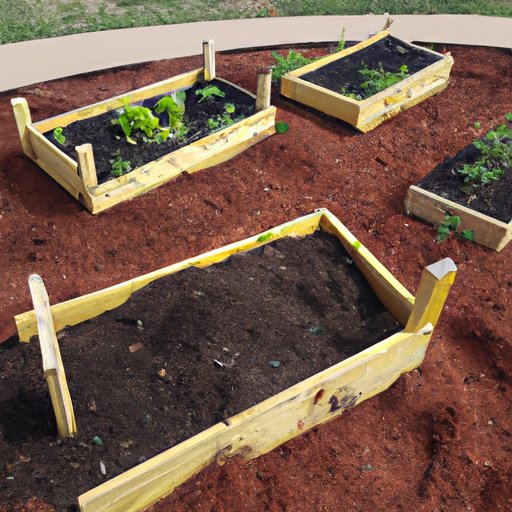Introduction
Raised bed gardening is a popular way to grow vegetables, herbs, and flowers. Raised beds are simply beds that are higher than the surrounding area, usually made out of wood or stone. The sides of the beds are typically two to four feet high, but they can be any size. They are great for small spaces, as they take up less space than traditional rows. They also provide better drainage and help keep weeds away. But one of the most important questions for gardeners is: how deep should raised beds be?
A Step-by-Step Guide to Building the Perfect Raised Bed
Building a raised bed is relatively simple. First, you’ll need to gather the materials. You can use wood, stones, bricks, or even metal for the sides of the bed. For the bottom, you’ll need some kind of liner to keep the soil in place. Once you have all the materials, it’s time to measure and mark the area where you want to build the bed. You’ll need to measure the length and width of the bed, as well as the height of the sides. Then, it’s time to construct the bed. Depending on the materials you’ve chosen, this could involve nailing together pieces of wood, laying down stones, or stacking bricks. Once the bed is built, you can add soil and start planting!
How Deep Should Your Raised Beds Be? A Look at the Benefits of Different Depths
The depth of your raised bed will depend on what types of plants you’re growing and the type of soil you have. Generally speaking, shallow beds (6-12 inches) are best for annuals, greens, and other shallow-rooted vegetables. Deeper beds (12-18 inches) are better for root vegetables, such as carrots and potatoes. If you’re looking to do no-till gardening, you’ll need beds that are at least 18 inches deep.
The Pros and Cons of Raised Bed Gardening: What Depth Is Best?
Raised bed gardening has its advantages and disadvantages. On the plus side, raised beds provide excellent drainage, retain moisture better than traditional gardens, and make it easy to control soil composition. On the downside, they can be expensive to build, and require more maintenance than traditional gardens. So, when it comes to deciding the depth of your raised beds, it’s important to weigh the pros and cons and decide which depth is best for your particular situation.

Choosing the Right Depth for Your Raised Bed Garden
When choosing the right depth for your raised bed garden, there are three main factors to consider: the plants you’re growing, the type of soil you have, and the climate you live in. If you’re growing shallow-rooted plants, a shallow bed will suffice. If you’re growing root vegetables, a deeper bed might be necessary. Additionally, if you live in an area with poor soil, you may need to go deeper to ensure adequate drainage. Finally, if you live in a hot, dry climate, deeper beds will help retain moisture better than shallow beds.
Maximizing Plant Growth with the Right Depth for Your Raised Beds
Once you’ve chosen the right depth for your raised beds, it’s important to maximize plant growth. This can be done by properly preparing the soil, spacing plants appropriately, and mulching. Proper soil preparation involves adding organic matter, such as compost, to the soil to improve drainage and nutrient availability. Appropriate spacing allows plants the room they need to grow and prevents overcrowding. Finally, mulching helps retain moisture and keeps weeds away.
Conclusion
Raised bed gardening is an excellent way to grow vegetables, herbs, and flowers. When deciding how deep to make your raised beds, it’s important to consider the type of plants you’re growing, the type of soil you have, and your climate. Shallow beds are best for shallow-rooted plants, while deeper beds are better for root vegetables. Additionally, proper soil preparation, appropriate spacing, and mulching can help maximize plant growth. With the right depth and the right care, you can create a thriving raised bed garden.


